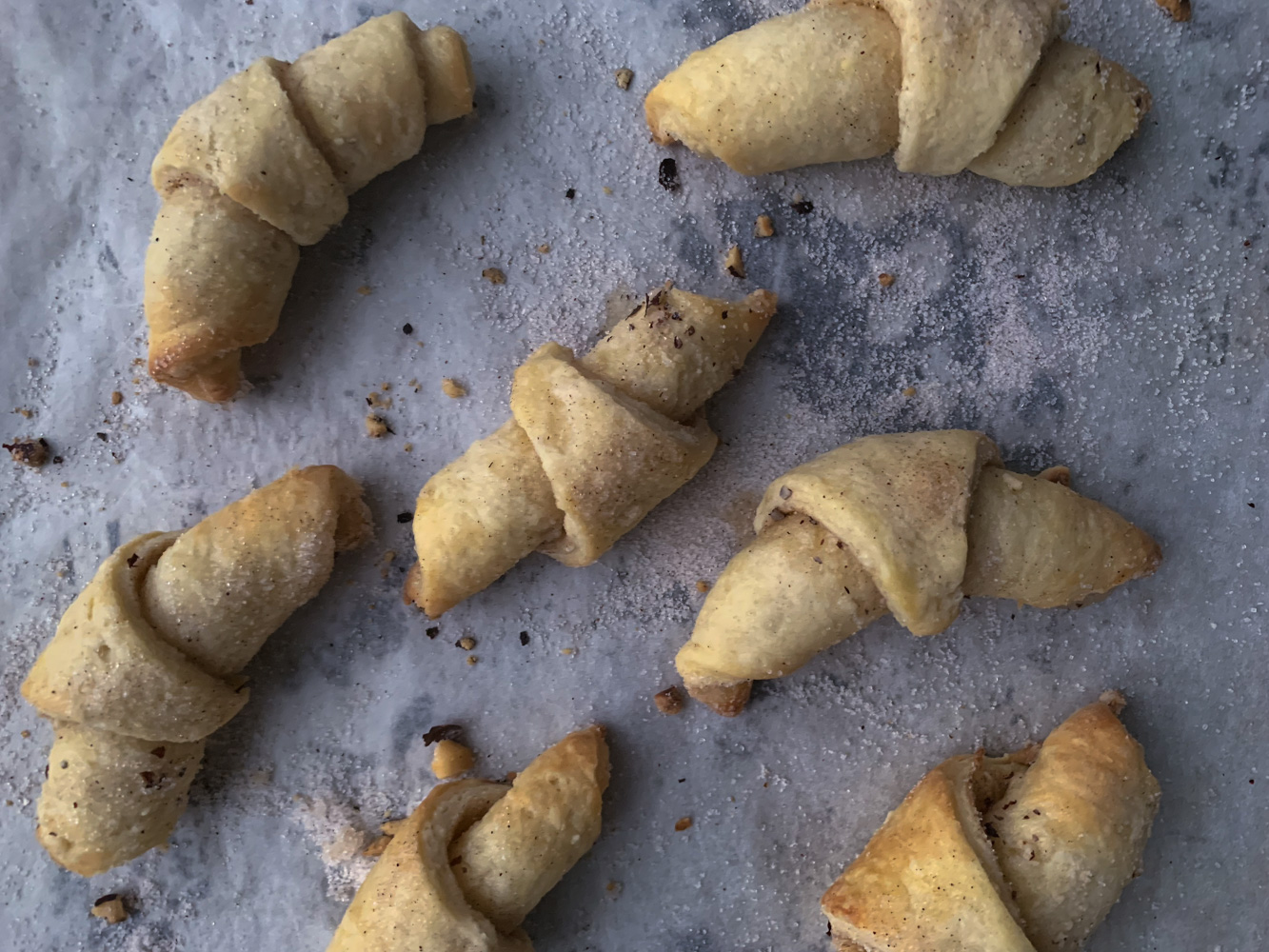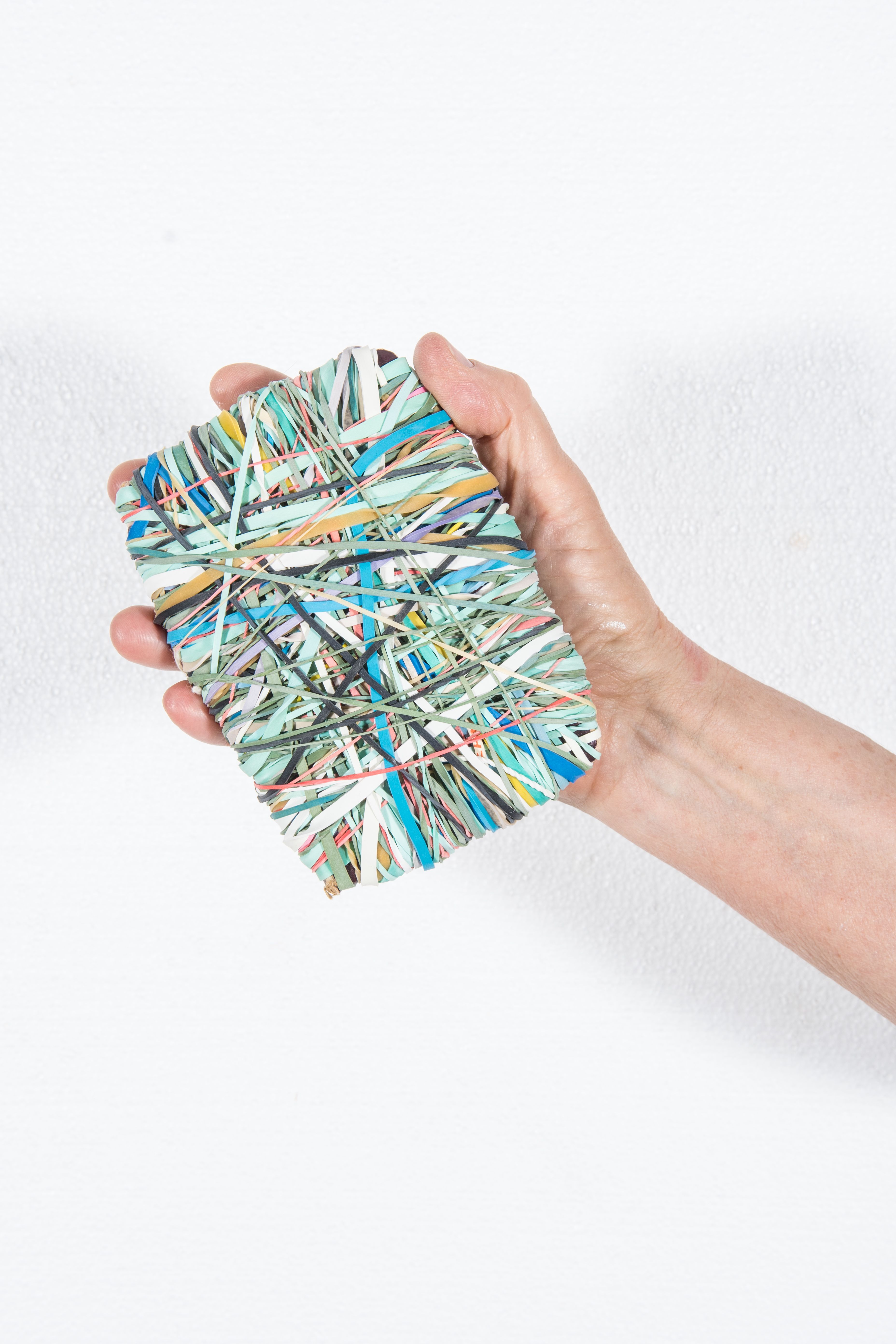“I know, I’ll make cookies!”
When we first viewed our house before buying it, I lingered in the cozy little kitchen, trying not to look too hard at the owner’s cookbook collection on the shelves above the washing machine. But I couldn’t help myself; there was a life story on those shelves. I saw Elizabeth David’s books, French books, Italian books, British books I also owned and loved, and several books on entertaining.
She appreciated seasonal flavours, not fussy but special, and she liked to host.
Further along the shelf I saw low-fat 1980’s books, heart-healthy books, low-sugar, then low-carb.
She dabbled in dieting.
Then I spotted Canadian titles with fun and playful graphics, regional books and celebratory books.
She was back in the cooking for pleasure game.
It was an inspiring, honest collection.
Everybody has a story. Sometimes it’s wrapped up and hidden, sometimes it’s sitting on the shelves above the washing machine, sometimes you have to unwind it.
At first glance I thought this rectangle was a receptacle for rubber bands, like one of those balls that grows with each and every layer. I spotted it laying on my aunt Sandra’s studio table, next to her notebook, rubber stamps, ink pads and needlework. There was purpose to this rectangle beyond rubber band storage utility. I knew it.
A photographer had been there the day before, capturing the ‘ingredients’ she uses when teaching her workshop tactile notebooks & the written word. The workshop is about creating a mobile studio within a notebook, one that ignites the senses through touch, feel and meditative action. At the beginning of the workshop Sandra shows the students her little bound diary, one that my mother gave her in 1958 for her 11th birthday. She tells the students to trust that although they are creating and recording personal thoughts in the company of others, binding your private life so no one else can see is always an option. Sandra says the idea for binding a diary came from Kerri MacLellan, a musician and student at NSCAD several years ago. Kerri left her rubber band bound diary on a table at the college and Sandra spotted it immediately. She references this student every time she shares her bound diary to the class.
Inside the diary there’s a entry that goes like this:
Dear Diary,
Today I asked Susan S if she wanted to play with me. She said she no.
I know, I’ll make cookies!
It’s not illicit stuff. Just a little hint at what 11 year old Sandra did when she was feeling low. They would have been chocolate chip, she says, using the recipe on the back of the Nesbitt chocolate chip bag. I would have done exactly the same thing… in fact just the other day there were two injured boys in the house, a few struggling at school, a mountain of laundry and lots of rain. The usual stuff. I wasn’t sure where to start, so I said to myself,
I know, I’ll make cookies!
I chose a wrapped cookie that holds a secret: Grace’s Danish. It’s a family recipe from my friend Christine, passed down to her from great aunt Grace, who lived in Fall River, Massachusetts. Her Quebecois husband worked at a Jewish bakery, where he learned the fine art of the Rugelach. But Grace, with her French Catholic heritage, couldn’t serve a Jewish cookie at Christmas, so they became Grace’s Danish.
Before you wrap up your secrets beneath layers of rubber, share this: your favourite cookie recipe, where it came from, and why you love it.

Grace’s Danish (or Rugelach to some)
Makes approximately 48 crescent-shaped cookies
For the cookie dough:
3/4 lbs (340g) butter
1 tbsp dried yeast
1/2 cup (125ml) warm water
4 cups (600g) flour
1/2 tsp salt
2 tbsp sugar
2 eggs, beaten
For the topping:
1 1/2 cups (320g) sugar
2 tsp cinnamon
1 cup (120g) nuts, ground (I used hazelnuts, pounded in a mortar and pestle)
Directions:
Melt butter in a saucepan over medium heat. Set aside to cool.
Sprinkle yeast over warm water and set aside as the butter cools.
Sift flour together with salt and sugar in a large bowl. Make a well in the centre of the flour and add beaten eggs. Add butter and yeast and mix well with a fork, then a wooden spoon, until dough is smooth. Chill dough in the refrigerator for 2 hours.
Meanwhile, mix sugar with cinnamon then chop (grind or bash) nuts until ‘sprinkle-able.’
Line a cookie sheet with parchment paper. Preheat oven to 325F / 160C.
Take the dough out of the fridge and make the ‘rugelach’ by scooping up a large ball of dough with your hand, about 2 golf balls in size. Lightly flour a work surface and roll ball into a 9 inch (22cm) circle. Sprinkle with the cinnamon sugar mixture and the nuts. Cut the circle like a pie into 8 triangles. Roll each triangle, starting at the wide end, ending with the tip. Place rolls, tip side tucked under a little on the cookie sheet (I’ve had the tips pop up in the oven before, creating little sail boats rather than crescents, which is ok, but what would Grace say?)
Bake until just golden, about 11-13 minutes.

